The Principle: Challenging The Intellectual Integrity Of Cosmology
This is the best science documentary film that I have ever seen. It puts physical science into its correct and proper place behind philosophy, logic, and religion, instead of superior to them, in terms of the definition of what is truth. It is a film that I wish that I had made, because it makes a difficult and complex technical subject easy to understand, by revealing the prejudicial bias of scientists, who pretend to discover truth based upon proof and evidence, but who really promote preconceived prejudices. It takes cosmology, the science of the universe, out of the hands of experts, and shows that what the experts believe is wrong, and that they base their opinions, not upon scientific facts, but upon unproven assumptions. The main unproved assumption that this film addresses is the Copernican Principle. This is an assumption, unproven of course, that is elevated by scientific language to make it sound like it is something more than just a biased preconceived conclusion without substantiated proof or convincing evidence to justify it.
The Principle, in the manner of a science documentary film, addresses a current problem in the science of cosmology, popularly
known as the “Axis Of Evil”, but it is really an exploration and critical “cross-examination” of the intellectual integrity of modern science. That is what makes this film extraordinary and exceptional. It cross-examines the testimony of cosmologists who claim to be telling the truth about the science of the universe. When compared with the recently produced cosmological documentary series Cosmos, that appeared in 2014 on US televisions FOX Network The Principle is superior in every aspect. This writer found Cosmos to be rather worthless as a depiction of the critical issues of modern science, since it was more a vehicle for the inculcation of prejudices and scientific mythology. The public deserves a cosmological documentary that possesses intellectual integrity, rather than a vehicle for atheistic materialist propaganda that Cosmos is. As a science documentary, The Principle, provides this vehicle for presenting a far superior discussion of cosmology and its intellectual development than does Cosmos. Everyone who has a desire to understand what science has to tell us about the creation of the universe should see this film, because it tells a straight intellectually honest story. That story is that scientists adhere to a code that restricts them from investigating whether God created the universe, or not, and whether the human species is a creation, or simply an accidental result of a mechanically materialistic operation of impersonal laws of physics.
Despite what is implied by The Principle film, and the standard science histories, the so  called Copernican Principle is a relatively new idea invented by Hermann Bondi, shortly after World War II, in the course of promoting his steady state cosmology. The first reference appears in his 1950 book titled Cosmology. This is born out by the fact that the Copernican Principle terminology is rarely found in cosmology or astronomy texts until after the 1950s. Therefore, it comes as a surprise to this writer that this principle, whose origin is entirely modern and questionable, would be defended so vigorously by the cosmologists in the film. Bondi’s Copernican Principle remains the only thing that is left of the discredited steady state cosmology theory. The Copernican Principle seems to have attracted the favor of the scientific community, when Bondi’s steady state cosmology did not. That deserves an explanation and the film suggests why by implication of the prejudices revealed in the film. To put this into perspective, the Copernican Principle is only as old as this writer, and in that time has become a fundamental tenant of cosmological science, that advocates the idea that cosmologists correctly understand how the universe was formed, elements were created, stars formed and galaxies evolved out of the initial big bang event in terms of a theory they call the Standard Model.
called Copernican Principle is a relatively new idea invented by Hermann Bondi, shortly after World War II, in the course of promoting his steady state cosmology. The first reference appears in his 1950 book titled Cosmology. This is born out by the fact that the Copernican Principle terminology is rarely found in cosmology or astronomy texts until after the 1950s. Therefore, it comes as a surprise to this writer that this principle, whose origin is entirely modern and questionable, would be defended so vigorously by the cosmologists in the film. Bondi’s Copernican Principle remains the only thing that is left of the discredited steady state cosmology theory. The Copernican Principle seems to have attracted the favor of the scientific community, when Bondi’s steady state cosmology did not. That deserves an explanation and the film suggests why by implication of the prejudices revealed in the film. To put this into perspective, the Copernican Principle is only as old as this writer, and in that time has become a fundamental tenant of cosmological science, that advocates the idea that cosmologists correctly understand how the universe was formed, elements were created, stars formed and galaxies evolved out of the initial big bang event in terms of a theory they call the Standard Model.
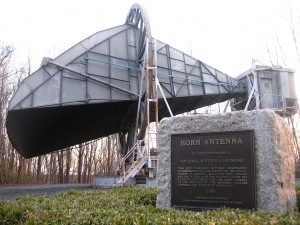
Bell Labs’ Horn Antenna in Crawford Hill, NJ – In 1964 while using the Horn Antenna, Penzias and Wilson stumbled on the microwave background radiation that permeates the universe.
Suppose that we agreed to rewrite the biblical book of Genesis based upon the discoveries of modern science, how would we go about doing that and keep a place for God in the conversation? This is the underlying question asked by the film, The Principle. That question is what informs the cross-examination of cosmologists, and their theories of creation, that is contained in this film. The clear answer to the question is, that there is no place for God in a scientific theory of the creation of the universe and why we exist, according to cosmologists. That is a very obvious problem revealing that what cosmologists have to say, ought to be examined with extreme caution and skepticism. The Principle does exactly this without trying to impose its religious viewpoint upon the conversation. But the clear result of the cross-examination of the science of cosmology is that there is a gigantic gap in the thinking of scientific cosmology in terms of religious values that needs to be corrected. In the film, The Theory of Everything, which portrays the life of the famous cosmologist Stephen Hawking, we learn that Dr Hawking is a vociferous atheist. The reality of cosmology is that they are constructing a science of creation based upon atheistic principles, and it should be no surprise that their results are pitifully inadequate to the requirements of producing a satisfactory theory of creation. When modern cosmologists look to nature, they don’t see the hand of God, or the action of a creative spirit, they see only impersonal physical laws that act in a mechanical way, without goal or purpose. This is not exactly a theory neutral examination of nature as the objectives of science proclaim it. It is an examination of nature that rejects finding God and does everything possible to push God out of the scientific conversation. The Principle is a film that reveals this prejudice and informs us that this is not an objective way to do science.
This writer thinks that The Principle does a very good job of showing why the science of cosmology, and science in general, ought to have religion and faith based ideas in the scientific conversation. But the film is only a first step towards that goal, in that its cross-examination of cosmology reveals deficiencies, it does not provide a way to correct them. What the film shows is what many scientists already know, that the scientific conversation is strictly limited, and that the conversation is highly censored and controlled to exclude topics that have been deemed taboo. One famous example of this is criticism of Einstein’s theories of relativity. A topic that is covered in the film in a noncontroversial and objective fashion. The film shows us that the relativity theory arises as a way to explain why the measurements of the motion of the earth produce the result that the earth is not moving. This is a very severe contradiction of the Copernican claim that the earth moves. Einstein provided a theory that removed the difficulty, but the theory of relativity is highly unsatisfactory in a large number of ways. It conflicts with many experiments and is plagued by many well known and documented theoretical difficulties called paradoxes that have never been resolved. Despite these deficiencies, the modern theory of cosmology is based upon Einstein’s general theory of relativity.
One of the modern historical fictions invented by cosmologists is the myth of Giordano Bruno, which is given a central place in the film. This historical myth was created by Fred Hoyle, and popularized by his “popular,” that is oriented towards the average layman reader, book Astronomy, a history of man’s investigation of the universe, Crescent Books, Inc. 1962, page 128. The Bruno story, which made him into a martyr for the theory of heliocentrism, was repeated in the popular book Astronomy, by Donald H. Menzel Random House, 1967, page 224. These books appear to have picked up the Bruno story from other sources, but by injecting the story that Bruno was an innocent victim of the Roman Catholic inquisition into the history of science, the viability of the myth was assured. It has persisted, despite that it is entirely modern and seems to stem from Fred Hoyle’s version of it. Like Hermann Bondi, Hoyle was a great popularizer of modern cosmology in his attempt to establish the steady state cosmology, that was later superseded by the big bang cosmology, following the discovery of the cosmic microwave background radiation by Penzias and Wilson in 1964.
The substance of the Bruno myth was that he was a scientist or astronomer and that his cosmological speculations were suppressed by the Catholic Church. The facts of the case are however, quite different. Bruno was not a scientist, or had any scientific training of any kind, and his execution, by burning as a heretic, resulted more from his socially destructive revolutionary ideology and his outspoken promotion of heretical religious views in an age where religious differences were political dynamite. Despite this, the film shows scientist Michio Kaku explaining the myth in modern terms, as if it was socially acceptable behavior to advocate religious heresy in an age when people of all faiths were executed for their religious differences. The Bruno incident was not exceptional in an age when Catholics were hunted down in Elizabethan England and executed, just for being Catholic.
The film examines the discovery of the redshift and the Hubble law, and correctly points out a very obvious difficulty that this law violates the Copernican principle, because the Hubble law, with redshift interpreted as a velocity, places the earth at the center of the universe in a favored position, contrary to the Copernican principle. But as usual, cosmologists have found a way to adjust the general theory of relativity to fit the discordant facts of observation. The solution described in the film, using the expanding surface of a balloon, is unfortunately an over simplification. What is actually required is that space has to have four dimensions,
not three dimensions plus time, but four dimensions of space are required so that three dimensional space can expand in the same manner that the two dimensional surface of a balloon expands in a three dimensional space. Unfortunately, the existence of four dimensional space is contrary to observation and is just a theoretical concept not verified by any experiments. However, it avoids the conclusion that the Copernican principle is violated by the observed motions of galaxies.
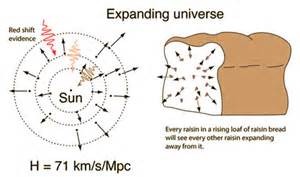
The muffin model violates the Copernican Principle unless space is four dimensional instead of three dimensional
It is now a generally accepted fact by the scientific community, that the universe was created according to the big bang theory. That theory has unfortunately been plagued by numerous intractable difficulties, which the film points out. The main, and probably most important, difficulty is that the big bang theory is a failure as a theory of creation of the elements and all of the matter in the universe. The problem is that the big bang, far from creating all of the elements, as cosmologists now know, created only a very few elements. This was a major disqualification, but scientists, who are always clever at avoiding fatal flaws in their pet theories, invented a way to get around that difficulty, by hypothesizing that the missing elements are created by nuclear reactions in stars. But as it turned out this doesn’t work for the heavier elements beyond iron, and so they invented another way to avoid the difficulty by supposing that supernova explosions created these missing elements. This produces the highly romantic claim that we humans are the products of star dust forged in the interiors of stars and spread into space by gigantic stellar explosions. It sounds great in a film script but as science it is pretty unconvincing.
The missing mass difficulty is another defect of the current scientific theory of the universe that has also been fixed by an ad hoc invention. This problem arose from the fact that galaxies spin too fast. Actually because the outermost stars move too fast, and because this violates the currently accepted theories of gravity, there had to be a solution. In the 1970s I used to read papers by Vera Rubin, where she showed that the spectrographic measurements of galaxy rotation curves did not confirm the Newtonian gravity theory. I remember thinking that this was observational dynamite for the current theories of gravity. But I was wrong. Scientists devised a way to resolve the problem. The solution was to add missing mass to the galaxies so that the law of gravity was maintained, but that produced the unfortunate difficulty that so much of the unobservable missing mass, or as it is now called dark matter, had to be added, that there was more of it than any other matter in the universe. Despite that, it has never been identified as to what it is, or observed in any experiment designed to detect it.
Then there is the inflation problem. That aspect of the theory was invented to avoid a difficulty regarding the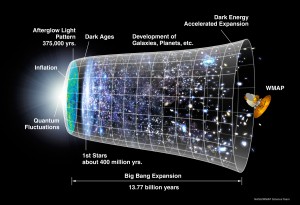 measured microwave cosmic background radiation. The measured microwave radiation was too smooth or showed too little fluctuation to be compatible with galaxy formation. In order to form galaxies, the expansion of the universe had to be non-uniform so that galaxies could condense. But in conforming to the Copernican Principle, there was not enough bumpiness to cause galaxies to form. The universe was therefore too uniform, and even, or smooth as cosmologists like to say. So something was needed to violate the Cosmological Principle so that galaxies could form, but the solution also had to make the measured cosmic microwave background very smooth as well. This contradiction of the big bang cosmology was resolved by the theory of inflation invented by Alan Guth and Andrei Linde.
measured microwave cosmic background radiation. The measured microwave radiation was too smooth or showed too little fluctuation to be compatible with galaxy formation. In order to form galaxies, the expansion of the universe had to be non-uniform so that galaxies could condense. But in conforming to the Copernican Principle, there was not enough bumpiness to cause galaxies to form. The universe was therefore too uniform, and even, or smooth as cosmologists like to say. So something was needed to violate the Cosmological Principle so that galaxies could form, but the solution also had to make the measured cosmic microwave background very smooth as well. This contradiction of the big bang cosmology was resolved by the theory of inflation invented by Alan Guth and Andrei Linde.
Another disturbing difficulty was presented by the problem that the universe has too fast an expansion rate. This problem occurred in the 1990s when observational evidence showed that the cosmological models did not account for the universe’s accelerating rate of increasing expansion. This problem was fixed by introducing the hypothesis that there exists a dark energy that explains the observations. This is just another disturbing contradiction that shows that cosmology is a bag of tricks designed to save the currently accepted scientific principles, in particular the Copernican Principle.
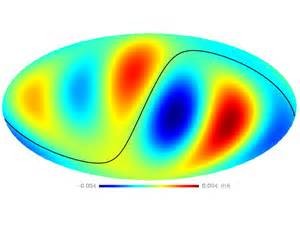 As a final contradiction, the film addresses the problem of what is popularly called the axis-of-evil. The essence of this problem is that there is a preferred direction for the cosmic microwave background radiation, supposed to be created by the big bang itself many eons ago. The film tells us that cosmologists do not have a good answer yet to this particular difficulty. The film suggests that this problem disproves the Copernican Principle because it indicates a special direction in space related to the earth’s particular orbital parameters. Of course the cosmological experts don’t like to face this sort of difficulty with the observational evidence, but past experience suggests that they will be able to invent a solution that keeps the current scientific orthodoxy intact.
As a final contradiction, the film addresses the problem of what is popularly called the axis-of-evil. The essence of this problem is that there is a preferred direction for the cosmic microwave background radiation, supposed to be created by the big bang itself many eons ago. The film tells us that cosmologists do not have a good answer yet to this particular difficulty. The film suggests that this problem disproves the Copernican Principle because it indicates a special direction in space related to the earth’s particular orbital parameters. Of course the cosmological experts don’t like to face this sort of difficulty with the observational evidence, but past experience suggests that they will be able to invent a solution that keeps the current scientific orthodoxy intact.
To conclude, The Principle focuses attention on the particular concept expressed in the Copernican or cosmological principle. In terms of its modern expression, this principle informs science that there is nothing special about human life and its development on earth. That idea makes any conception of God, and the special quality of life, that interprets existence and consciousness as bestowed upon humans for a special purpose, as out of bounds in science. The writers of the film accept the premise that this principle has its origins in the scientific revolution when the Catholic Church was stripped of its power to control the scientific discussion. This has been universally accepted as a positive development, even by the Catholic Church, and that has 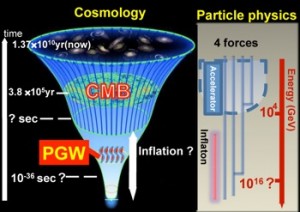 aided the development of atheistic materialism in the scientific method. It is a very subtle irony, presented only in passing in the course of the film, that the power to control the scientific conversation has passed from the church and people of faith, to the control of the scientific establishment, which is obviously biased in its suppression of any controversy that challenges its ability to determine what is deemed as scientific truth. This clearly reminds us of the struggle of the church authorities with the heresy of Giordano Bruno and the more orthodox challenge of the Copernican ideology as advocated by Galileo Galilee. Today the scientific authorities rule just as tyrannically as the Catholic Church did in the middle ages.
aided the development of atheistic materialism in the scientific method. It is a very subtle irony, presented only in passing in the course of the film, that the power to control the scientific conversation has passed from the church and people of faith, to the control of the scientific establishment, which is obviously biased in its suppression of any controversy that challenges its ability to determine what is deemed as scientific truth. This clearly reminds us of the struggle of the church authorities with the heresy of Giordano Bruno and the more orthodox challenge of the Copernican ideology as advocated by Galileo Galilee. Today the scientific authorities rule just as tyrannically as the Catholic Church did in the middle ages.
The film shows us that in the past, when nature has presented evidence that contradicts the accepted scientific truth, that cosmologists and physical scientists have circumvented the difficulties by inventing ad hoc theories to avoid the difficulties. This has given us a host of controversial scientific concepts of dubious validity. Examples are Einstein’s relativity, the expanding universe, the big bang, missing mass or dark matter, dark energy, and finally the axis of evil problem. In the process we saw that evidence that indicated that the earth was in a special place, for example the concentric shells of the expanding universe, were rejected because they were not consistent with the Copernican principle. That means that many possible alternative theories have been rejected and not received the critical examination that they deserve. One of the most interesting that was not mentioned in the film are the speculations of Halton Arp. There are certainly many other ideas that hold promise that are not considered scientific, and so never get published or see the light of day in the public conversation of the origin of our universe. That is a shame and it needs to be corrected.
As my final comment I think the following image captures exactly my reaction to this outstanding film. Everyone needs to view this film.
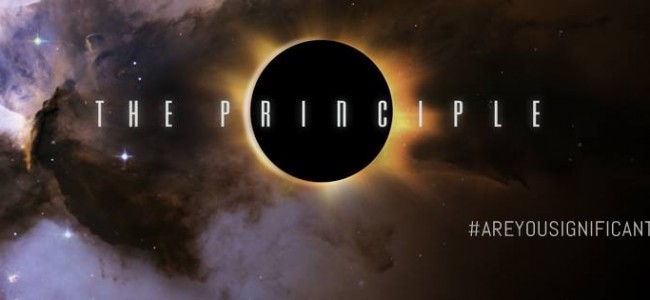
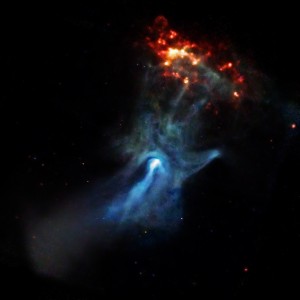
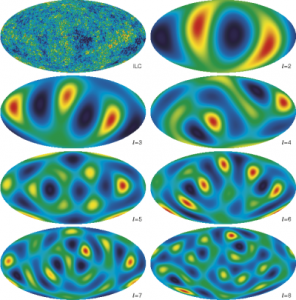
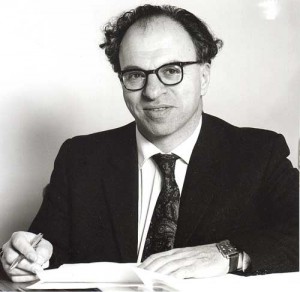
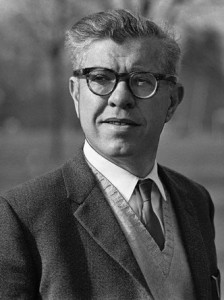

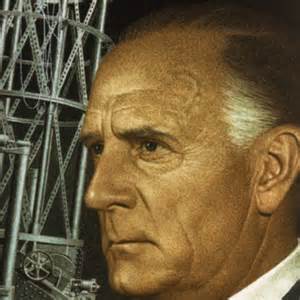
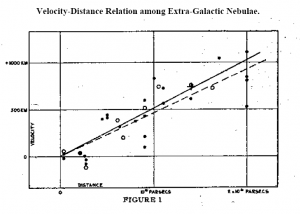
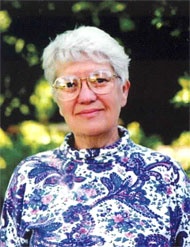

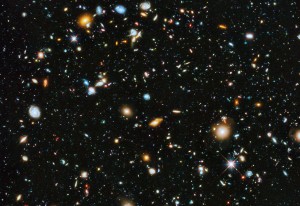
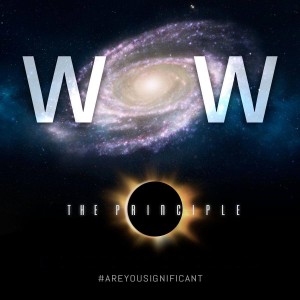




Harry, where can we see the film? Did you get a screener? Also, the trailer seems to be very different from what your article implies. I’m a bit confused but obviously, I have not seen the film.
I was given permission to see the film to write this review. I viewed it twice. Both times I was very positively impressed. I loved it.
After reading the website, this film seems to promote the earth is special and at the center of the universe. I see they try to show as well many points of view but the people who produced the film seem to be from the religious right and includes The Passion of Christ, Ben Stein’s Expelled: No Intelligence Allowed, and Dinesh Souza’s Obama 2016. This makes me think that this is a right-wing film, not an objective film. Nothing against conservative but there seems to be a big agenda here and pretends to look at all sides much like Ben Stein’s film.
David, I specifically was careful not to read any commentary regarding the film before viewing it. I did not read what the website said about the film. I went in with an objective attitude. I was expecting something much worse, and I was impressed with the objectivity of the film. In particular I recommend it for any body interested in cosmology. It presents the facts very well and is very informative and educational.
The producer of The Principle chose that distributor not because it has produced neocon films but because they were willing to distribute it despite the MSM’s prejudices against it.
See the external link on The Principle’s wikipedia page entitled “Thoughtcrime: The Conspiracy to Stop The Principle 20 min. mini-documentary on The Principle”
The Principle can be streamed on: ThePrincipleMovie.com
Thanks to Harry Ricker III for a very fine review.
Two additional precognitive reviews in the comment section swell what is already a remarkable number of these.
Some insight into the cognitive dissonance:
http://www.theprinciplemovie.com/concise-overview-media-hoax-principle-documentary/
Rick, Frankly I thought the film was excellent. If there was a major problem, I would have said so. Great JOB.
Pardon David but your prejudice is showing. The producers do have an agenda. It’s objective truth. You should show how the examples you cite lack objectivity rather than just asserting that they do. If you need an example of objective reasoning, Google St Thomas Aquinas “Summa Theologica”.
So earth is th center of the universe?
Ralph, I think that this is a pretty silly question. The answer that modern science gives is that the earth is not at the center of the universe. That answer is not based upon any actual scientific proof, hence it is called the cosmological or Copernican principle. What is interesting is that this is just an unsubstantiated claim and there is no empirical proof. The difficulty is that there is empirical evidence that shows that the earth is at the center of the universe. In particular the fact that the measured velocity of the galaxies all show them moving radially away from the earth. that clearly puts the earth at the center of the universe.
If ‘all’ the galaxies are moving away from us, how do you account for M31, the Andromeda galaxy, that is on a collision course with the Milky Way?
You did not mention the concentric shells about earth that apparently have been found in the macro structure of the universe. I have not seen the film but I believe this was mentioned in it. Do you find this evidence significant?